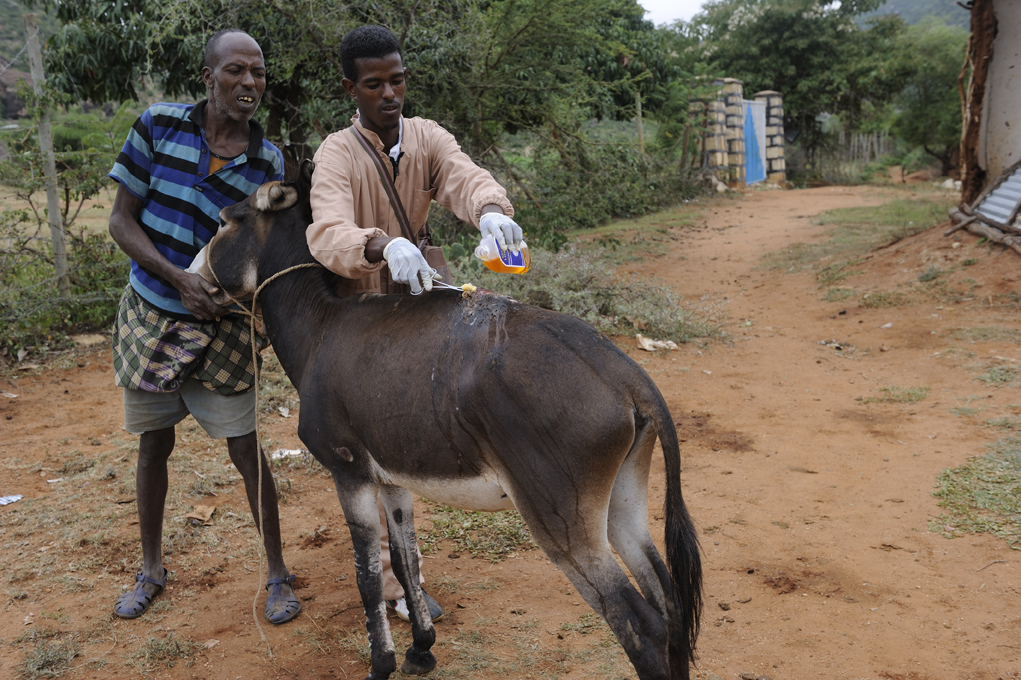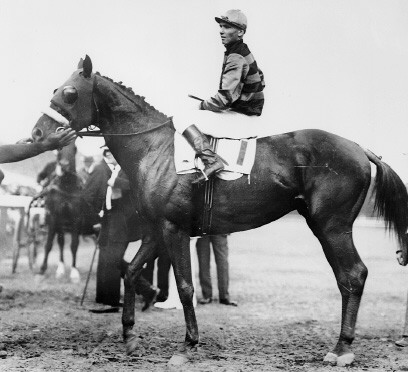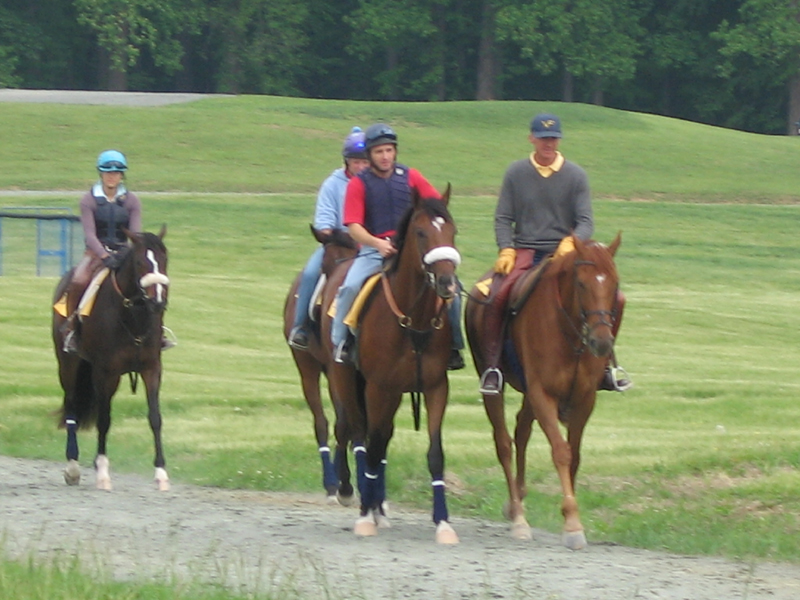|
Susan Stover
Susan Marie Stover is a professor of veterinary anatomy at the University of California, Davis School of Veterinary Medicine and director of the J.D. Wheat Veterinary Orthopedic Research Laboratory. One of the focuses of her wide-ranging research is musculoskeletal injuries in racehorses, particularly catastrophic breakdowns. Her identification of risk factors has resulted in improved early detection and changes to horse training and surgical repair methods. On July 30, 2016, Stover received the Lifetime Excellence in Research Award from the American Veterinary Medical Association. In August 2016, she was selected for induction into the University of Kentucky Equine Research Hall of Fame. Education and honors Stover earned her Doctor of Veterinary Medicine degree from Washington State University in 1976. She then completed an internship and residency in equine surgery at UC Davis. After working in private practice in Washington state, she returned to UC Davis where she became b ... [...More Info...] [...Related Items...] OR: [Wikipedia] [Google] [Baidu] |
Veterinary Medicine
Veterinary medicine is the branch of medicine that deals with the prevention, management, medical diagnosis, diagnosis, and treatment of disease, disorder, and injury in non-human animals. The scope of veterinary medicine is wide, covering all animal species, both List of domesticated animals, domesticated and wildlife, wild, with a wide range of conditions that can affect different species. Veterinary medicine is widely practiced, both with and without professional supervision. Professional care is most often led by a veterinarian, veterinary physician (also known as a veterinarian, veterinary surgeon, or "vet"), but also by paraveterinary workers, such as veterinary nurses, veterinary technicians, and veterinary assistants. This can be augmented by other paraprofessionals with specific specialties, such as animal physiotherapy or dentistry, and species-relevant roles such as farriers. Veterinary science helps human health through the monitoring and control of Zoonosis, zoonoti ... [...More Info...] [...Related Items...] OR: [Wikipedia] [Google] [Baidu] |
Skeletal System Of The Horse
The skeletal system of the horse has three major functions in the body. It protects vital organs, provides framework, and supports soft parts of the body. Horses typically have 205 bones. The pelvic limb typically contains 19 bones, while the thoracic limb contains 20 bones. Functions of bones Bones serve four major functions in the skeletal system; they act as levers, they help the body hold shape and structure, they store minerals, and they are the site of red blood cell formation. Bones can be classified into five categories # Long bones: aid in locomotion, store minerals, and act as levers. They are found mainly in the limbs. # Short bones: Absorb concussion. Found in joints such as the knee, hock, and fetlock. # Flat bones: Enclose body cavities containing organs. The ribs are examples of flat bones. # Irregular bones: Protect the central nervous system. The vertebral column consists of irregular bones. # Sesamoid bones: Bones embedded within a tendon. The horse's proximal ... [...More Info...] [...Related Items...] OR: [Wikipedia] [Google] [Baidu] |
Pastern
The pastern is a part of the leg of a horse between the fetlock and the top of the hoof. It incorporates the Equine_forelimb_anatomy#Metacarpal_bones, long pastern bone (proximal phalanx) and the Equine_forelimb_anatomy#Middle_phalanx, short pastern bone (middle phalanx), which are held together by two sets of paired ligaments to form the pastern joint (proximal interphalangeal joint). Anatomically homologous to the two largest bones found in the human finger, the pastern was famously mis-defined by Samuel Johnson in A Dictionary of the English Language, his dictionary as "the knee of a horse". When a lady asked Johnson how this had happened, he gave the much-quoted reply: "Ignorance, madam, pure ignorance." Anatomy and importance The pastern consists of two bones, the uppermost called the "large pastern bone" or proximal phalanx, which begins just under the fetlock joint, and the lower called the "small pastern bone" or middle phalanx, located between the large pastern bone an ... [...More Info...] [...Related Items...] OR: [Wikipedia] [Google] [Baidu] |
Fetlock
Fetlock is the common name in horses, large animals, and sometimes dogs for the metacarpophalangeal and metatarsophalangeal joints (MCPJ and MTPJ). Although it somewhat resembles the human ankle in appearance, the joint is homologous to the ball of the foot. In anatomical terms, the hoof corresponds to the toe, rather than the whole human foot. Etymology and related terminology The word literally means "foot-lock" and refers to the small tuft of hair situated on the rear of the fetlock joint. "Feather" refers to the particularly long, luxuriant hair growth over the lower leg and fetlock that is characteristic of certain breeds. Formation A fetlock (a MCPJ or a MTPJ) is formed by the junction of the third metacarpal (in the forelimb) or metatarsal (in the hindlimb) bones, either of which are commonly called the cannon bones, proximally and the proximal phalanx distally, commonly called the pastern bone. Paired proximal sesamoid bones form the joint with the ... [...More Info...] [...Related Items...] OR: [Wikipedia] [Google] [Baidu] |
Horse Hoof
A horse hoof is the lower extremity of each leg of a horse, the part that makes contact with the ground and carries the weight of the animal. It is both hard and flexible. It is a complex structure surrounding the distal Phalanx bones, phalanx of the 3rd digit (digit III of the basic pentadactyl limb of vertebrates, evolved into a single weight-bearing digit in horses) of each of the four limbs, which is covered by soft tissue and keratinised (cornified) matter. Anatomy The hoof is made up of two parts. The outer part, called the hoof capsule, is composed of various cornified specialized structures. The inner, living part of the hoof, is made up of soft tissues and bone. The cornified materials of the hoof capsule differ in structure and properties. Dorsally, it covers, protects, and supports P3 (also known as the coffin bone, pedal bone, or PIII). Palmarly/plantarly, it covers and protects specialised soft tissues, such as tendons, ligaments, fibro-fatty and/or fibrocartilagin ... [...More Info...] [...Related Items...] OR: [Wikipedia] [Google] [Baidu] |
Track Surface
The track surface of a horse racing track refers to the material of which the track is made. There are three types of track surfaces used in modern horse racing. These are: *Turf, the most common track surface in Europe *Dirt, the most common track surface in the US *Artificial or Synthetic, the collective term for a number of proprietary man-made surfaces in use at a number of locations around the world. The style of racing differs between surfaces, with dirt races tending to have the fastest pace, while turf racing often comes down to a sprint in the stretch. Races on artificial surfaces tend to play out somewhere in between. Anecdotally, American bettors consider dirt racing to be more predictable, which makes it a more popular medium for betting purposes. Weather conditions affect the speed of the different surfaces too, and grading systems have been developed to indicate the track condition (known as the "going" in the UK and Ireland Ireland (, ; ; Ulster Scots di ... [...More Info...] [...Related Items...] OR: [Wikipedia] [Google] [Baidu] |
United States Energy And Commerce Subcommittee On Commerce, Manufacturing And Trade
The House Subcommittee on Commerce, Manufacturing, and Trade is a subcommittee within the United States House Committee on Energy and Commerce. The subcommittee was known as the Subcommittee on Consumer Protection and Commerce until the 118th Congress, when data policy was transferred to it from the Subcommittee on Communications and Technology. It was known as the Subcommittee on Innovation, Data and Commerce until the 119th Congress. Jurisdiction The committee has jurisdiction over issues affecting interstate and foreign commerce, including all trade matters within the jurisdiction of the full committee; regulation of commercial practices at the Federal Trade Commission, including sports-related matters; consumer affairs and consumer protection, including privacy matters generally; consumer product safety at the Consumer Product Safety Commission; product liability; and motor vehicle safety; Regulation of travel, tourism, and time. Within these specific areas, the committee also ... [...More Info...] [...Related Items...] OR: [Wikipedia] [Google] [Baidu] |
Triple Crown Of Thoroughbred Racing (United States)
In the United States, the Triple Crown of Thoroughbred Racing, commonly known as the Triple Crown, is a series of horse races for three-year-old Thoroughbreds, consisting of the Kentucky Derby, Preakness Stakes, and Belmont Stakes. The three races were inaugurated in different years, the last being the Kentucky Derby in 1875. The Triple Crown Trophy, commissioned in 1950 but awarded to all previous winners as well as those after 1950, is awarded to a horse who wins all three races and is thereafter designated as a Triple Crown winner. The races are traditionally run in May and early June of each year, although global events have resulted in schedule adjustments, such as in 1945 and 2020. The first winner of all three Triple Crown races was Sir Barton in 1919. Some journalists began using the term ''Triple Crown'' to refer to the three races as early as 1923, but it was not until Gallant Fox won the three events in 1930 that Charles Hatton (journalist), Charles Hatton of the ''D ... [...More Info...] [...Related Items...] OR: [Wikipedia] [Google] [Baidu] |
Eight Belles
Eight Belles (February 23, 2005 – May 3, 2008) was an American Thoroughbred racehorse who came second in the 2008 Kentucky Derby to the winner Big Brown. Her collapse just after the race resulted in immediate euthanasia. Earlier in the year, Eight Belles became the first filly in Oaklawn Park history to win the Martha Washington Stakes, the Honeybee Stakes, and the Fantasy Stakes. She won the Martha Washington by 13½ lengths, setting a stakes record for margin of victory. Kentucky Derby breakdown Eight Belles broke down approximately a furlong (1/8 mile) after the wire, while being slowed after the race. She suffered compound fractures of both front ankles and was immediately euthanized because of the nature of her injuries. Dr. Larry Bramlage, the on-call veterinarian, stated that Eight Belles' trauma was too severe to even attempt to move her off the track. According to the Louisville ''Courier-Journal'', Bramlage said Eight Belles had fractures of the cannon and se ... [...More Info...] [...Related Items...] OR: [Wikipedia] [Google] [Baidu] |
Barbaro (horse)
Barbaro (April 29, 2003 – January 29, 2007) was a champion American Thoroughbred racehorse who won the 2006 Kentucky Derby but shattered his leg two weeks later in the Preakness Stakes which ended his racing career and eventually led to the decision to euthanize him. On May 20, 2006, Barbaro ran in the Preakness Stakes as a heavy favorite, but, after a false start, he fractured three bones in and around the fetlock of his right hind leg. The injury ruined any chance of a Triple Crown in 2006 and ended his racing career. The next day, he underwent surgery at the New Bolton Center at the University of Pennsylvania for his injuries. In July he developed laminitis in his left rear foot. He was rushed to the hospital, where he underwent five further operations, and his prognosis varied during an exceptionally long stay in the Equine Intensive Care Unit at the New Bolton Center. After his right hind leg eventually healed, he developed further laminitis in both front hooves. His v ... [...More Info...] [...Related Items...] OR: [Wikipedia] [Google] [Baidu] |
Graded Stakes Race
A graded stakes race is a thoroughbred horse race in the United States that meets the criteria of the American Graded Stakes Committee of the Thoroughbred Owners and Breeders Association (TOBA). A specific grade level (I, II, III or listed) is then assigned to the race, based on statistical analysis of the quality of the field in previous years, provided the race meets the minimum purse criteria for the grade in question. In Canada, a similar grading system is maintained by the Jockey Club of Canada. Graded stakes races are similar to Group races in Europe but the grading is more dynamic in North America. A high grading can also be used by racetracks to promote the race in question. When determining Eclipse Award winners, racing journalists will consider the number and grade of a horse's stakes wins during the year. In general, stakes race refers to the stake, or entry fee, owners must pay, which generally forms part of the prize money offered to the top finishers. Not all stak ... [...More Info...] [...Related Items...] OR: [Wikipedia] [Google] [Baidu] |
Thoroughbred Owners And Breeders Association
The Thoroughbred Owners and Breeders Association (TOBA) is an American trade organization for Thoroughbred racehorse owners and breeders, which is based in Lexington, Kentucky. Founded in 1961, TOBA's stated mission is to "improve the economics, integrity and pleasure of the sport on behalf of Thoroughbred owners and breeders." Through its American Graded Stakes Committee, TOBA is responsible for annually evaluating and setting a Graded stakes race designation for races in the United States whose recent editions have consistently represented the highest quality competition. TOBA is represented on the board of directors of the National Thoroughbred Racing Association (NTRA) as a founding member and on the American Horse Council. ''The Blood-Horse'' is a publication of TOBADaniel J. Metzgerhas been president of the association since 1999. In 2022, the 8th National Thoroughbred Owner Conference – organized by Thoroughbred OwnerView (The Jockey Club and TOBA), ''BloodHorse'' and ... [...More Info...] [...Related Items...] OR: [Wikipedia] [Google] [Baidu] |





